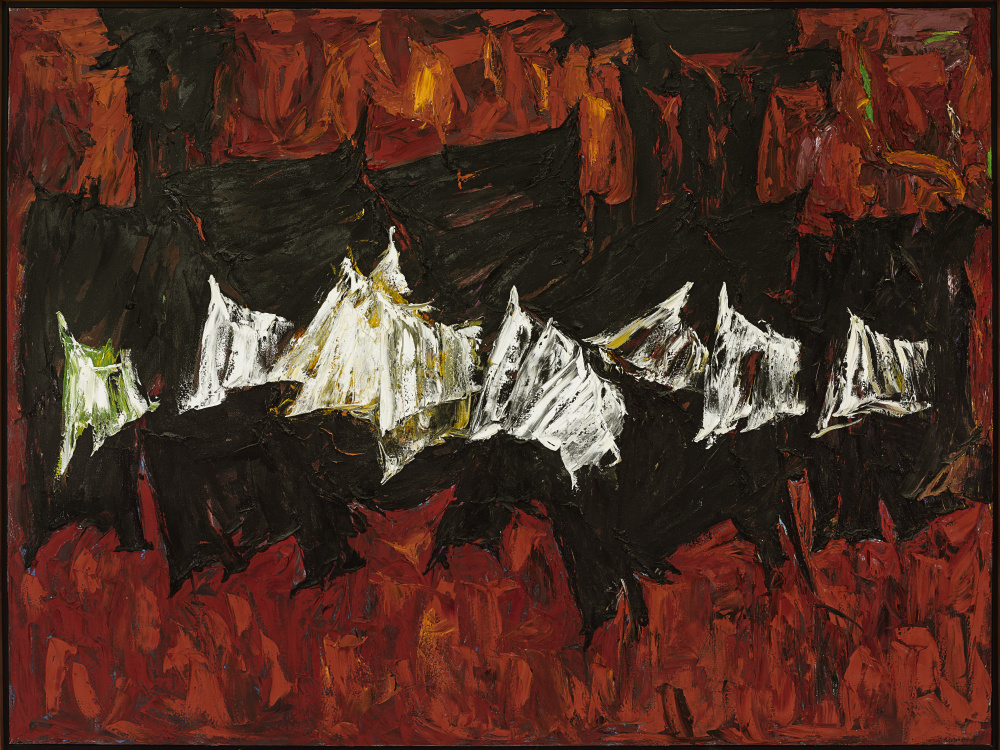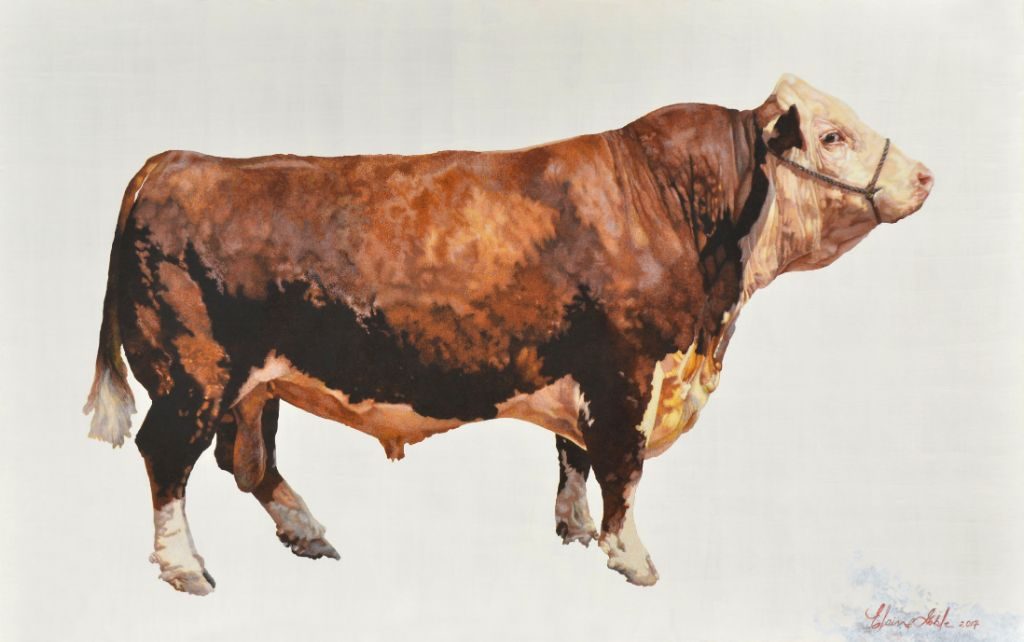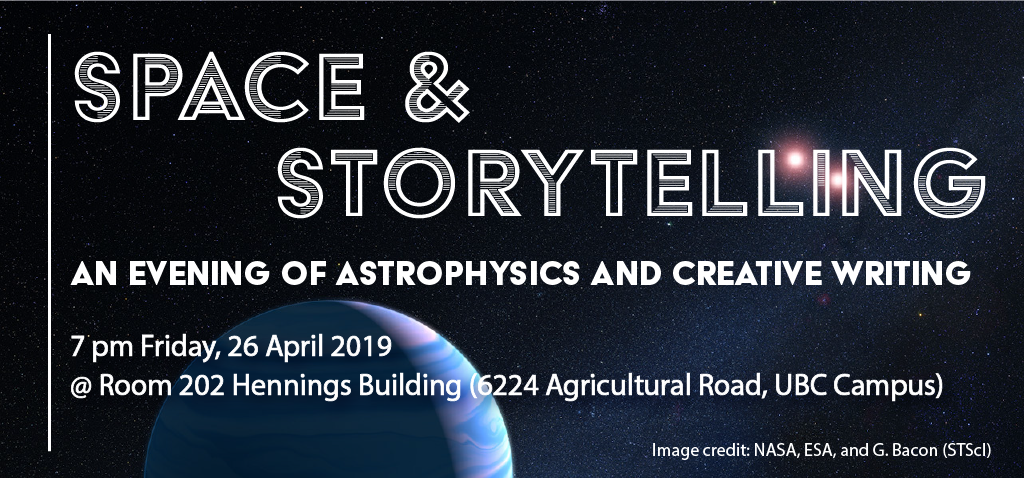I have some news about conserving art; early bird registration deadlines for two events, and, finally, an announcement about contest winners.
Canadian Light Source (CLS) and modern art

This is one of three pieces by Rita Letendre that underwent chemical mapping according to an August 5, 2020 CLS news release by Victoria Martinez (also received via email),
Research undertaken at the Canadian Light Source (CLS) at the University of Saskatchewan was key to understanding how to conserve experimental oil paintings by Rita Letendre, one of Canada’s most respected living abstract artists.
The work done at the CLS was part of a collaborative research project between the Art Gallery of Ontario (AGO) and the Canadian Conservation Institute (CCI) that came out of a recent retrospective Rita Letendre: Fire & Light at the AGO. During close examination, Meaghan Monaghan, paintings conservator from the Michael and Sonja Koerner Centre for Conservation, observed that several of Letendre’s oil paintings from the fifties and sixties had suffered significant degradation, most prominently, uneven gloss and patchiness, snowy crystalline structures coating the surface known as efflorescence, and cracking and lifting of the paint in several areas.
Kate Helwig, Senior Conservation Scientist at the Canadian Conservation Institute, says these problems are typical of mid-20th century oil paintings. “We focused on three of Rita Letendre’s paintings in the AGO collection, which made for a really nice case study of her work and also fits into the larger question of why oil paintings from that period tend to have degradation issues.”
Growing evidence indicates that paintings from this period have experienced these problems due to the combination of the experimental techniques many artists employed and the additives paint manufacturers had begun to use.
In order to determine more precisely how these factors affected Letendre’s paintings, the research team members applied a variety of analytical techniques, using microscopic samples taken from key points in the works.
“The work done at the CLS was particularly important because it allowed us to map the distribution of materials throughout a paint layer such as an impasto stroke,” Helwig said. The team used Mid-IR chemical mapping at the facility, which provides a map of different molecules in a small sample.
For example, chemical mapping at the CLS allowed the team to understand the distribution of the paint additive aluminum stearate throughout the paint layers of the painting Méduse. This painting showed areas of soft, incompletely dried paint, likely due to the high concentration and incomplete mixing of this additive.
The painting Victoire had a crumbling base paint layer in some areas and cracking and efflorescence at the surface in others. Infrared mapping at the CLS allowed the team to determine that excess free fatty acids in the paint were linked to both problems; where the fatty acids were found at the base they formed zing “soaps” which led to crumbling and cracking, and where they had moved to the surface they had crystallized, causing the snowflake-like efflorescence.
AGO curators and conservators interviewed Letendre to determine what was important to her in preserving and conserving her works, and she highlighted how important an even gloss across the surface was to her artworks, and the philosophical importance of the colour black in her paintings. These priorities guided conservation efforts, while the insights gained through scientific research will help maintain the works in the long term.
In order to restore the black paint to its intended even finish for display, conservator Meaghan Monaghan removed the white crystallization from the surface of Victoire, but it is possible that it could begin to recur. Understanding the processes that lead to this degradation will be an important tool to keep Letendre’s works in good condition.
“The world of modern paint research is complicated; each painting is unique, which is why it’s important to combine theoretical work on model paint systems with this kind of case study on actual works of art” said Helwig. The team hopes to collaborate on studying a larger cross section of Letendre’s paintings in oil and acrylic in the future to add to the body of knowledge.
Here’s a link to and a citation for the paper,
Rita Letendre’s Oil Paintings from the 1960s: The Effect of Artist’s Materials on Degradation Phenomena by Kate Helwig, Meaghan Monaghan, Jennifer Poulin, Eric J. Henderson & Maeve Moriarty. Studies in Conservation (2020): 1-15 DOI: https://doi.org/10.1080/00393630.2020.1773055 Published online: 06 Jun 2020
This paper is behind a paywall.
Canadian Science Policy Conference (CSPC) 2020
The latest news from the CSPC 2020 (November 16 – 20 with preconference events from Nov. 1 -14) organizers is that registration is open and early birds have a deadline of September 27, 2020 (from an August 6, 2020 CSPC 2020 announcement received via email),
It’s time! Registration for the 12th Canadian Science Policy Conference (CSPC 2020) is open now. Early Bird registration is valid until Sept. 27th [2020].
CSPC 2020 is coming to your offices and homes:
Register for full access to 3 weeks of programming of the biggest science and innovation policy forum of 2020 under the overarching theme: New Decade, New Realities: Hindsight, Insight, Foresight.
2500+ Participants
300+ Speakers from five continents
65+ Panel sessions, 15 pre conference sessions and symposiums
50+ On demand videos and interviews with the most prominent figures of science and innovation policy
20+ Partner-hosted functions
15+ Networking sessions
15 Open mic sessions to discuss specific topics
The virtual conference features an exclusive array of offerings:
3D Lounge and Exhibit area
Advance access to the Science Policy Magazine, featuring insightful reflections from the frontier of science and policy innovation
Many more
Don’t miss this unique opportunity to engage in the most important discussions of science and innovation policy with insights from around the globe, just from your office, home desk, or your mobile phone.
Benefit from significantly reduced registration fees for an online conference with an option for discount for multiple ticket purchases
The preliminary programme can be found here. This year there will be some discussion of a Canadian synthetic biology roadmap, presentations on various Indigenous concerns (mostly health), a climate challenge presentation focusing on Mexico and social vulnerability and another on parallels between climate challenges and COVID-19. There are many presentations focused on COVID-19 and.or health.
There doesn’t seem to be much focus on cyber security and, given that we just lost two ice caps (see Brandon Spektor’s August 1, 2020 article [Two Canadian ice caps have completely vanished from the Arctic, NASA imagery shows] on the Live Science website), it’s surprising that there are no presentations concerning the Arctic.
International Symposium on Electronic Arts (ISEA) 2020
According to my latest information, the early bird rate for ISEA 2020 (Oct. 13 -18) ends on August 13, 2020. (My June 22, 2020 posting describes their plans for the online event.)
You can find registration information here.
Margaux Davoine has written up a teaser for the 2020 edition of ISEA in the form of an August 6, 2020 interview with Yan Breuleux. I’ve excerpted one bit,
Finally, thinking about this year’s theme [Why Sentience?], there might be something a bit ironic about exploring the notion of sentience (historically reserved for biological life, and quite a small subsection of it) through digital media and electronic arts. There’s been much work done in the past 25 years to loosen the boundaries between such distinctions: how do you imagine ISEA2020 helping in that?
The similarities shared between humans, animals, and machines are fundamental in cybernetic sciences. According to the founder of cybernetics Norbert Wiener, the main tenets of the information paradigm – the notion of feedback – can be applied to humans, animals as well as the material world. Famously, the AA predictor (as analysed by Peter Galison in 1994) can be read as a first attempt at human-machine fusion (otherwise known as a cyborg).
The infamous Turing test also tends to blur the lines between humans and machines, between language and informational systems. Second-order cybernetics are often associated with biologists Francisco Varela and Humberto Maturana. The very notion of autopoiesis (a system capable of maintaining a certain level of stability in an unstable environment) relates back to the concept of homeostasis formulated by Willam Ross [William Ross Ashby] in 1952. Moreover, the concept of “ecosystems” emanates directly from the field of second-order cybernetics, providing researchers with a clearer picture of the interdependencies between living and non-living organisms. In light of these theories, the absence of boundaries between animals, humans, and machines constitutes the foundation of the technosciences paradigm. New media, technological arts, virtual arts, etc., partake in the dialogue between humans and machines, and thus contribute to the prolongation of this paradigm. Frank Popper nearly called his book “Techno Art” instead of “Virtual Art”, in reference to technosciences (his editor suggested the name change). For artists in the technological arts community, Jakob von Uexkull’s notion of “human-animal milieu” is an essential reference. Also present in Simondon’s reflections on human environments (both natural and artificial), the notion of “milieu” is quite important in the discourses about art and the environment. Concordia University’s artistic community chose the concept of “milieu” as the rallying point of its research laboratories.
ISEA2020’s theme resonates particularly well with the recent eruption of processing and artificial intelligence technologies. For me, Sentience is a purely human and animal idea: machines can only simulate our ways of thinking and feeling. Partly in an effort to explore the illusion of sentience in computers, Louis-Philippe Rondeau, Benoît Melançon and I have established the Mimesis laboratory at NAD University. Processing and AI technologies are especially useful in the creation of “digital doubles”, “Vactors”, real-time avatar generation, Deep Fakes and new forms of personalised interactions.
I adhere to the epistemological position that the living world is immeasurable. Through their ability to simulate, machines can merely reduce complex logics to a point of understandability. The utopian notion of empathetic computers is an idea mostly explored by popular science-fiction movies. Nonetheless, research into computer sentience allows us to devise possible applications, explore notions of embodiment and agency, and thereby develop new forms of interaction. Beyond my own point of view, the idea that machines can somehow feel emotions gives artists and researchers the opportunity to experiment with certain findings from the fields of the cognitive sciences, computer sciences and interactive design. For example, in 2002 I was particularly marked by an immersive installation at Universal Exhibition in Neuchatel, Switzerland titled Ada: Intelligence Space. The installation comprised an artificial environment controlled by a computer, which interacted with the audience on the basis of artificial emotion. The system encouraged visitors to participate by intelligently analysing their movements and sounds. Another example, Louis-Philippe Demers’ Blind Robot (2012), demonstrates how artists can be both critical of, and amazed by, these new forms of knowledge. Additionally, the 2016 BIAN (Biennale internationale d’art numérique), organized by ELEKTRA (Alain Thibault) explored the various ways these concepts were appropriated in installation and interactive art. The way I see it, current works of digital art operate as boundary objects. The varied usages and interpretations of a particular work of art allow it to be analyzed from nearly every angle or field of study. Thus, philosophers can ask themselves: how does a computer come to understand what being human really is?
I have yet to attend conferences or exchange with researchers on that subject. Although the sheer number of presentation propositions sent to ISEA2020, I have no doubt that the symposium will be the ideal context to reflect on the concept of Sentience and many issues raised therein.
For the last bit of news.
HotPopRobot, one of six global winners of 2020 NASA SpaceApps COVID-19 challenge
I last wrote about HotPopRobot’s (Artash and Arushi with a little support from their parents) response to the 2020 NASA (US National Aeronautics and Space Administration) SpaceApps challenge in my July 1, 2020 post, Toronto COVID-19 Lockdown Musical: a data sonification project from HotPopRobot. (You’ll find a video of the project embedded in the post.)
Here’s more news from HotPopRobot’s August 4, 2020 posting (Note: Links have been removed),
Artash (14 years) and Arushi (10 years). Toronto.
We are excited to become the global winners of the 2020 NASA SpaceApps COVID-19 Challenge from among 2,000 teams from 150 countries. The six Global Winners will be invited to visit a NASA Rocket Launch site to view a spacecraft launch along with the SpaceApps Organizing team once travel is deemed safe. They will also receive an invitation to present their projects to NASA, ESA [European Space Agency], JAXA [Japan Aerospace Exploration Agency], CNES [Centre National D’Etudes Spatiales; France], and CSA [Canadian Space Agency] personnel. https://covid19.spaceappschallenge.org/awards
15,000 participants joined together to submit over 1400 projects for the COVID-19 Global Challenge that was held on 30-31 May 2020. 40 teams made to the Global Finalists. Amongst them, 6 teams became the global winners!
The 2020 SpaceApps was an international collaboration between NASA, Canadian Space Agency, ESA, JAXA, CSA,[sic] and CNES focused on solving global challenges. During a period of 48 hours, participants from around the world were required to create virtual teams and solve any of the 12 challenges related to the COVID-19 pandemic posted on the SpaceApps website. More details about the 2020 SpaceApps COVID-19 Challenge: https://sa-2019.s3.amazonaws.com/media/documents/Space_Apps_FAQ_COVID_.pdf
…
We have been participating in NASA Space Challenge for the last seven years since 2014. We were only 8 years and 5 years respectively when we participated in our very first SpaceApps 2014.
We have grown up learning more about space, tacking global challenges, making hardware and software projects, participating in meetings, networking with mentors and teams across the globe, and giving presentations through the annual NASA Space Apps Challenges. This is one challenge we look forward to every year.
It has been a fun and exciting journey meeting so many people and astronauts and visiting several fascinating places on the way! We hope more kids, youths, and families are inspired by our space journey. Space is for all and is yours to discover!
…
If you have the time, I recommend reading HotPopRobot’s August 4, 2020 posting in its entirety.

